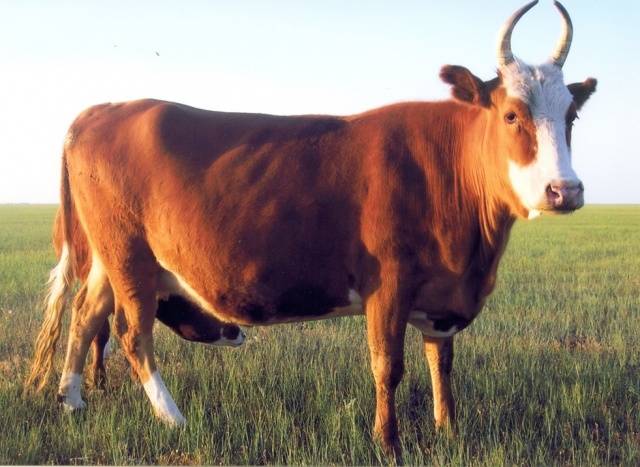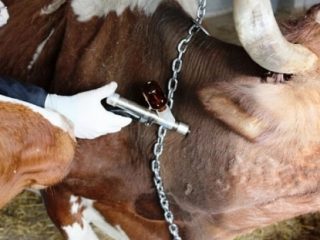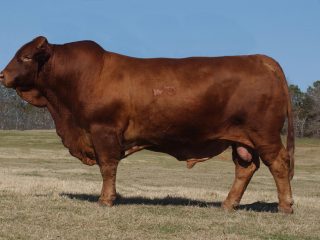Content
The Kalmyk cow is one of the ancient beef cattle breeds, presumably brought to the Kalmyk steppes by the Tatar-Mongols. More precisely, Kalmyk nomads who joined the Tatar-Mongol horde.
Previously, the Kalmyk tribes lived in the harsh conditions of Southern Altai, Western Mongolia and Western China. Like any nomads, the Kalmyks did not care much about livestock, leaving the animals to get their own food both in summer and winter. Summer and winter jutes “accustomed” the animals to quickly gain fat in case of hunger strike and to make do with a minimum of feed that is not of the best quality. They also built endurance during long journeys. In search of food, a Kalmyk cow can walk up to 50 km a day.
Description of the breed
Animals with a strong constitution. They have a harmonious build. Very mobile. The Kalmyk breed of cows is not very tall. Height at withers 126-128 cm. Oblique length 155-160 cm. Extension index 124. Chest girth 187±1 cm. Pastern girth 17-18 cm. Boning index 13.7. The bones are thin and strong.
The head is small and light. Even bulls have crescent-shaped horns. The color of the horns is light gray. The nasal planum is light. The neck is short, thick, with well-developed muscles. The withers are wide and well prominent. The chest is shallow. The ribs are barrel-shaped. The dewlap is well developed, especially in bulls. The back is flat and wide.The sacrum is either level with the withers in cows, or below the withers in bulls. The croup is straight. The legs are long and well set.
The color of Kalmyk cows is red. Possible white markings and feathering on the head, lower body, tail and legs.
Productive characteristics
Since it is a meat breed, its milk yield is low, only from 650 to 1500 kg of milk with a fat content of 4.2-4.4%. The lactation period of a Kalmyk cow is 8-9 months.
These representatives have calves cattle They also prefer to keep them to themselves, driving away even their own owners.
In terms of meat characteristics, this breed is one of the best bred in Russia. Adult cows weigh on average 420-480 kg, bulls 750-950. Some producers can reach weights of more than 1000 kg. Calves weigh 20-25 kg at birth. By the time of weaning at 8 months, their weight already reaches 180-220 kg. By the age of 1.5-2 years, bulls of the Kalmyk breed already reach a weight of 480-520 kg. In some cases, average daily weight gain can reach 1 kg. The slaughter yield from properly fed animals is 57-60%.
The photo shows one of the modern bulls of the Kalmyk breed.
The early ripening type is smaller and has a lighter frame.
Beef obtained from Kalmyk cattle has very high taste qualities. The need for survival led to the emergence of Kalmyk cattle to accumulate fat in all possible places. A fattened animal can have up to 50 kg of internal fat.Not counting the subcutaneous and the one that accumulates between the fibers of meat. It is thanks to the fat deposited between the muscle fibers that the famous “marbled” meat is obtained from Kalmyk bulls.
Stud bulls
Advantages of the Kalmyk breed
Difficult living conditions over several centuries had a positive effect on the reproductive abilities of Kalmyk cattle. Kalmyk cows are distinguished by a high insemination rate: 85-90%, and easy calving, due to the fact that they had to do without human help for centuries and calve in the windswept steppe. Calves are little susceptible to colds.
In winter, Kalmyk cattle acquire a thick undercoat, allowing them to sleep in the snow without consequences. Kalmyk cows are saved from the cold not only by their undercoat, but also by a thick layer of subcutaneous fat, which they fatten over the summer. Thanks to large fat reserves, a Kalmyk cow can lose up to 50 kg of weight before calving, and this will not affect the quality of the calf or the quantity of milk.
Kalmyk cattle can survive on a very meager food supply. In summer he wanders through the burnt-out steppe, in winter he digs up dry grass from under the snow. The only danger for Kalmyk herds: jutes. “Black” jute in the summer, when the grass burns out due to drought before it has time to grow. And “white” jute in winter, when the snow is covered with a thick crust of crust. During such periods, without human feeding, a very large number of livestock die of starvation. Not only cows die, but also sheep and horses if they are kept on “free” grazing.
Living in a sharply continental climate, the breed has the ability to tolerate both heat and cold. It is believed that this is facilitated by the special structure of the skin: near each hair there is not one sebaceous duct, as in other breeds, but several.
The Kalmyk cattle breed belongs to the group of breeds that can only be improved, only spoiled. It has no competitors in deserts, semi-deserts and arid steppes. Therefore, Kalmyk cattle are preserved as a source of genetic material used in the development of other breeds.
At the end of the 20th century, attempts were made to “improve” the Kalmyk breed by crossing cows with Shorthorn and Simmental bulls. The result was unsatisfactory and in most parts of Russia today they prefer to breed purebred Kalmyk cows. Purebred cattle are superior to Shorthorns and Simmentals in their meat performance.
The disadvantages of the breed today include only an overdeveloped maternal instinct, which previously helped protect calves from wolves, but today threatens the life of the cow owner.
Features of feeding
Cows of this breed are able to eat even feeds that are unsuitable for cattle, including semi-shrub plants. One of the best properties of the breed, highly valued by farmers, is the ability of livestock to fatten on grass alone, without the need for concentrated feed. The farmer's main expense at this time of year is the purchase of salt for the cows.
When there is a lack of water, animals stop eating and, consequently, become thin. The daily need for water depends on the body weight of the animal:
- up to 250 kg – at least 40 liters of water;
- up to 350 kg – at least 50 l;
- over 350 - at least 60 liters.
It is rational to introduce such restrictions when there is a lack of water in pastures. If there is enough water, animals should drink plenty.
Reviews from Kalmyk cattle owners
Conclusion
Kalmyk cattle are ideal for breeding by large farmers or agricultural complexes, especially those located in the steppe regions of Russia.Although this breed easily takes root even in rather harsh northern regions, there it requires additional feeding with grain, which makes beef production more expensive. For a private owner, it is rational to keep a cow of this breed if he only expects to receive meat from her. Although you can try to get milk from particularly flexible or lost calves.


















In industrial fattening, over 1.5 years, the weight of cattle of ordinary meat and dairy breeds should be 550-600 kg, and of meat breeds - 800-850 kg. The meat is lean, not fatty. Profitability on feed components at MARKET price =+(25-40)%, this means your own agricultural land is not required. The minimum livestock must be 3000 heads. Individual farmers can cooperate and create a collective farm, and then fattening can begin. You can also fatten sheep and goats. Stall housing of ruminants will prevent the spread of desertification of territories. Manure is processed into MINERAL fertilizer, which is better for plants than manure. And if you process solid waste in an environmentally safe way, you will get electricity, heat and cold in the right place, year-round greenhouse farming with mushrooms and tomatoes..., a canning plant, mineral fertilizer, etc. So, agriculture can be, even without subsidies, much more profitable than oil trading (to tell the truth - just not in Russia, unfortunately)! Feeding technology was created and tested in industrial conditions almost 30 years ago.